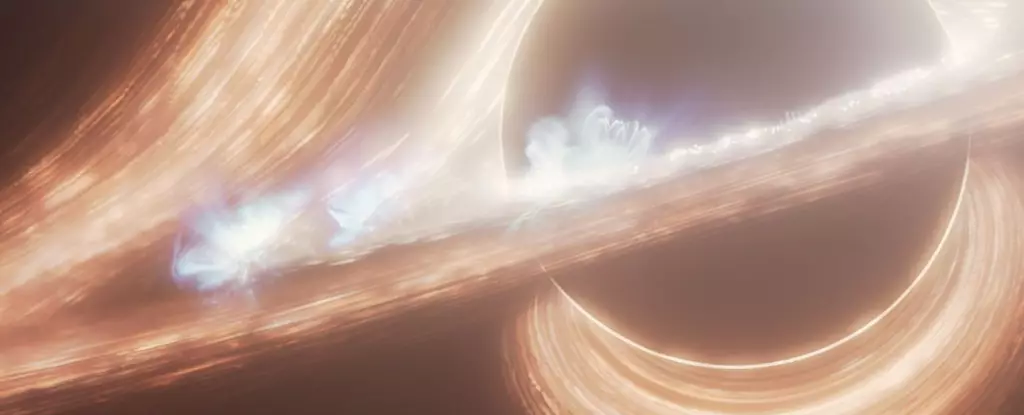At the center of our galaxy, known as the Milky Way, lies Sagittarius A* (Sgr A*), a supermassive black hole that captivates not just astronomers but anyone who gazes up at the stars. Unlike its more insatiable counterparts scattered throughout the cosmos, the black hole at the heart of our galaxy presents a quieter yet equally intriguing spectacle. Recent observations made by NASA’s James Webb Space Telescope (JWST) have unveiled a dramatic and vibrant tapestry of cosmic flares around Sgr A*, providing a fresh perspective and enriching our understanding of the dark monster lurking there.
NASA’s JWST has documented a plethora of energetic events in the vicinity of Sgr A*, revealing an intense level of activity that exceeded scientists’ expectations. The telescope recorded flares varying in intensity and duration, with an astonishing average of five to six significant bursts daily, rounded out by a series of smaller emissions. These frequent outbursts of light are not merely random occurrences—instead, they point to complex processes taking place in the accretion disk, which comprises superheated gas spiraling toward the black hole.
Farhad Yusef-Zadeh, the lead author of the research published in *The Astrophysical Journal Letters*, highlighted the unpredictable nature of these observations. The variability in brightness resembled a bubbling cauldron, punctuated by sudden, dramatic surges of light. This newfound irregularity suggests that Sgr A* behaves with an exhilarating unpredictability that challenges our assumptions about the phenomena surrounding black holes.
Diving deeper into the phenomena, researchers are considering two main mechanisms responsible for the firework display surrounding Sgr A*. The smaller flares are believed to arise from turbulence within the accretion disk itself. Here, the turbulent forces compress the hot, magnetized gas, generating brief bursts of radiation akin to solar flares observed in our Sun. Yusef-Zadeh draws parallels between these flaring events and solar phenomena, pointing out that the dynamics around black holes are far more extreme, indicating an environment filled with energetic forces.
On the other hand, the larger bursts are thought to result from magnetic reconnection phenomena, where colliding magnetic fields expel fast-moving particles capable of nearing light speed. This process can be visualized as a static electricity discharge but on a cosmic scale, illustrating the energetic environment surrounding black holes.
Among the astonishing discoveries was the observation of a timing discrepancy between flares captured at different wavelengths. The shorter wavelengths exhibited brightness changes slightly before those at longer wavelengths, showcasing a time delay that could provide crucial insights into the underlying processes governing the disk dynamics. This novel finding, unprecedented in prior studies, suggests that energy loss in these flares may occur more rapidly at shorter wavelengths—an indication of the complex physics at play.
Yusef-Zadeh elaborates on this timing pattern, emphasizing its potential to unlock the secrets of particle interactions and behaviors within the swirling mass of the accretion disk. Understanding this synchronization—or lack thereof—may guide scientists toward better models of black hole behavior and the extreme conditions that define these celestial phenomena.
With an eye toward future advancements, researchers aim to secure longer observation periods with the JWST to delve further into the activities surrounding Sgr A*. The ability to monitor these elusive flares continuously for extended durations could significantly decrease observational noise, allowing scientists to discern finer details of black hole interactions. With a sustained observing time, the universe could reveal even more about the hidden interplay of forces at the galaxy’s core.
The vibrant cosmic play of light surrounding Sagittarius A* not only enhances our understanding of supermassive black holes but also opens new avenues for exploration. With each flare, researchers inch closer to unlocking the enigmatic forces shaping the very structure of our Milky Way. As we continue to unveil the mysteries of our cosmic home, one thing becomes increasingly clear: the universe’s hidden dynamics are far greater than we could have ever imagined, offering a tantalizing glimpse into the heart of darkness itself.

